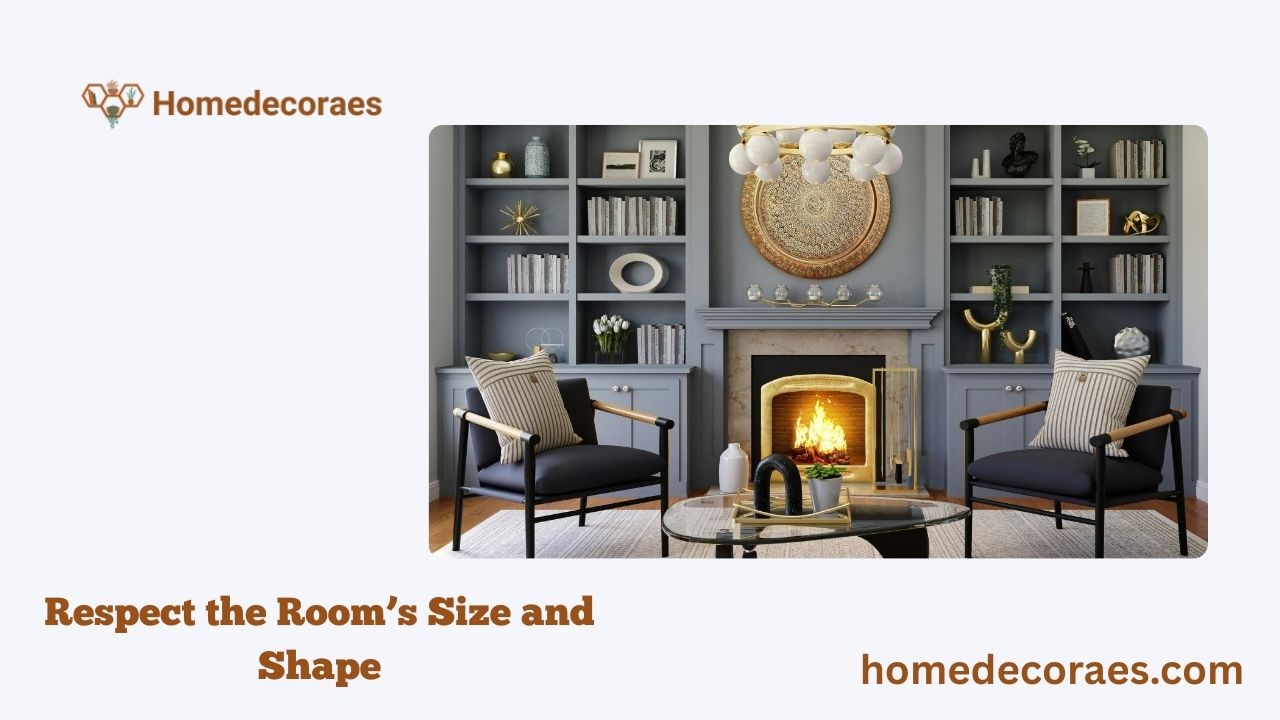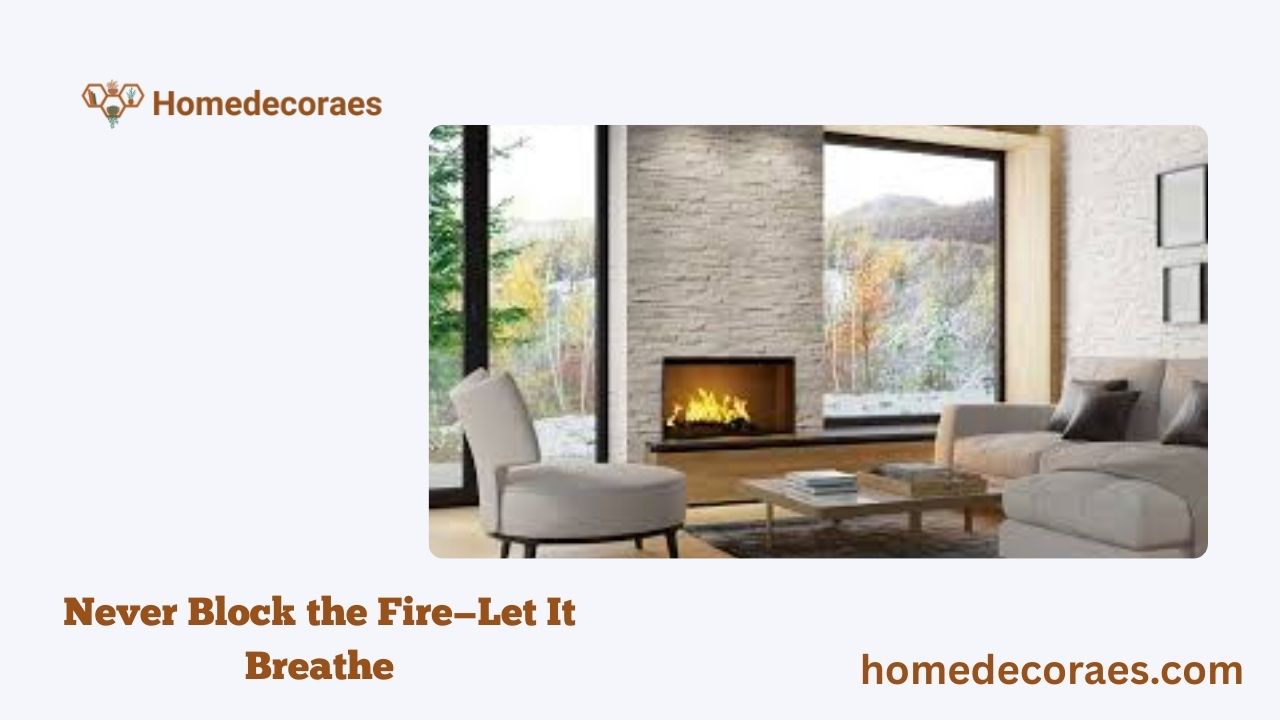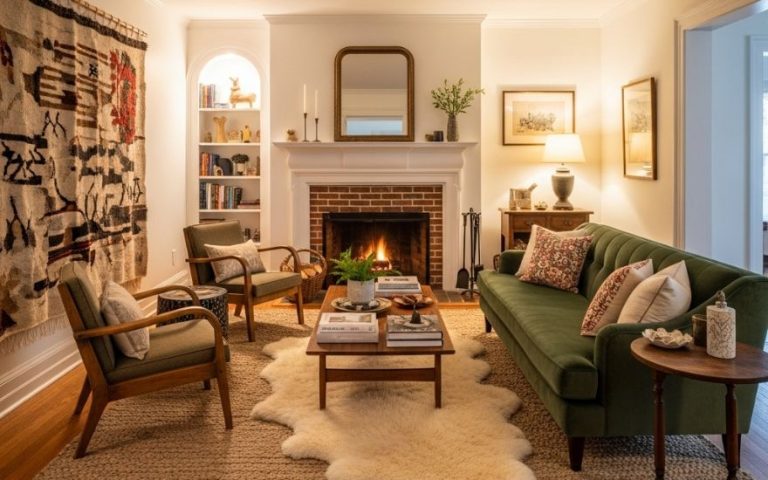There’s something undeniably comforting about a fireplace. It draws people in like a magnet, especially on chilly evenings. But how to arrange furniture around a fireplace in a way that feels natural, cozy, and functional? That’s the real puzzle. You’re not just placing chairs and sofas; you’re crafting a vibe—warm, welcoming, and ideally, Insta-worthy.
Years ago, I moved into a small craftsman home with a stunning brick fireplace smack in the center of the living room. But for weeks, the furniture just didn’t work. The room felt disconnected. It wasn’t until I rearranged the entire layout with the fireplace as my guiding star that the space finally clicked. That experience taught me something simple but powerful—the fireplace isn’t just a feature, it’s the soul of the room.
In this guide, I’ll walk you through the secrets to arranging furniture around a fireplace, whether you’re working with a tiny space, an awkward layout, or trying to juggle a TV and fireplace combo. Let’s dive in.
1. The Fireplace as a Natural Focal Point

Think of the fireplace as the room’s storyteller. It’s where guests glance first, where conversations linger, and where you sip cocoa on cold nights. So, rule number one: make the fireplace the focal point.
To do this, try a U-shaped layout. Imagine this:
- A sofa faces the fireplace directly.
- Two accent chairs sit on either side.
- A round coffee table in the middle anchors the space.
This setup creates a warm, inviting conversation circle that keeps the fire in view for everyone. It’s especially great for both socializing and solo lounging.
But it’s not just about placement—it’s also about orientation. Ensure each main seating piece faces or angles toward the fire. Even in a rectangular living room layout with fireplace and TV, resist the urge to ignore the fireplace in favor of the screen. You can balance both—we’ll cover that soon.
Tip: Use a low-profile coffee table so it doesn’t obstruct the view of the fireplace. Add a cozy rug to define the zone and bring the seating area together visually.
2. Respect the Room’s Size and Shape

Let’s be real—one size doesn’t fit all. What works in a large suburban living room might flop in a tiny downtown apartment. The key? Tune into the room’s natural flow.
In Larger Rooms:
You have more freedom, so go bold. Try a symmetrical layout with matching sofas facing each other, centered on the fireplace. This gives the space an elegant, formal feel. It’s also perfect for entertaining.
In Smaller Rooms:
Go for comfort and flexibility. Maybe it’s an L-shaped sectional or a corner sofa nestled into one side of the room, facing the fire. Pair it with a single swivel chair for balance. This works wonders in a small living room with fireplace layout, where every inch counts.
Personal tip: I once lived in a narrow loft where I placed a daybed perpendicular to the fireplace, then added a pouf for extra seating. Cozy, casual, and completely functional.
Here’s a quick breakdown:
| Room Type | Recommended Layout | Key Consideration |
| Large, open living room | Symmetrical seating, dual sofas, centered fireplace | Maintain balance and scale |
| Small apartment or loft | Sectional sofa facing fireplace, compact chairs | Maximize space, use light furniture |
| Long narrow living room layout with fireplace and TV | Furniture along the longer wall, fireplace at one end | Avoid tunnel effect—use mirrors for depth |
| Awkward living room layout with fireplace | Float furniture strategically, break up space with rugs | Let the fireplace guide, not dominate |
3. Never Block the Fire—Let It Breathe

It might seem obvious, but you’d be surprised how many people place furniture right in front of the fireplace. Not only does it block the view, but it also disrupts the room’s natural energy. Think of the fireplace like a stage—it needs open space to shine.
A general rule of thumb is to leave at least 3 feet (1 meter) of clear space in front of the hearth. This allows for:
- Safe access for tending the fire
- An unobstructed line of sight
- A sense of visual openness
This is especially critical in a small living room layout with fireplace and TV on different walls. The temptation is to cram everything in, but resist. Instead, float your furniture slightly away from the walls. Even just a few inches can make the room feel more breathable.
Also, don’t overlook traffic flow. Can people move easily from one end of the room to the other without bumping into furniture? If not, it’s time to reassess the layout.
4. Play it Safe: The Hidden Dangers of Cozy Living
There’s nothing cozier than a roaring fire—until your favorite throw pillow gets too close. Safety isn’t the most glamorous part of decorating, but it’s non-negotiable.
Here’s what to keep in mind when deciding how to arrange furniture around a fireplace:
- Minimum safe distance: 3 feet between any seating and the fireplace opening
- Fire-resistant materials: Use non-flammable upholstery for pieces near the hearth
- No rugs too close: Keep flammable materials like shag rugs or throws away from open flames
If you’re using a wood-burning fireplace, consider a glass screen or safety gate—especially if kids or pets are in the picture. And for gas fireplaces, ensure vents and heat ducts are unobstructed.
Personal side note: I once melted a candle that was too close to the hearth. The wax ruined my console table! Lesson learned—respect the heat.
Here’s a quick safety checklist:
- Keep flammable materials away
- Use heat-resistant furniture fabrics
- Allow room to move freely around the hearth
- Use screens for protection from sparks
5. Add Balance, Texture, and Cohesion
Here’s where the magic happens—pulling everything together. Once you’ve got the major pieces placed, it’s time to refine. That’s where balance and cohesion come in.
Start by layering textures. Add a chunky knit throw, a soft wool rug, and some linen pillows. Not only does this boost comfort, but it makes the room feel lived-in and inviting.
Next, look at proportions. Is your sofa dwarfing the fireplace? Are your chairs too petite? The furniture should feel in harmony with the scale of the room and the mantle itself.
Also, use decor accents to guide the eye. A well-placed mirror or painting above the fireplace draws attention upward. Matching side tables or lamps on either side of the sofa add visual symmetry.
And don’t forget color. Stick to a cohesive palette—maybe soft neutrals with earthy greens and wood tones. That’s especially important in an awkward living room layout with fireplace, where visual unity helps the room feel grounded.
6. When the TV and Fireplace Are Fighting for Attention
Now for the real challenge: How to arrange living room furniture with fireplace and TV—without making your space feel like a sports bar.
Some people hang the TV above the fireplace. It saves space, but it can strain your neck and compete visually with the fire. So when possible, try this:
- Place the TV on a side wall, angled slightly toward the sofa
- Float furniture between the two, oriented for both viewing points
- Use a swivel mount if wall space is limited
This works beautifully in a small living room layout with fireplace and TV on different walls. You’re not forced to choose one focal point over the other—you simply create two subtle zones.
I once used a media console with a rotating TV base. It allowed me to watch a movie at night, then turn the screen away during the day, so the fireplace could take center stage again. Brilliant.
7. Embracing Windows, Light, and the Outside In
Windows can be a blessing—or a design puzzle—especially in living room ideas with fireplace and windows on adjacent walls. Natural light is always a win, but it can compete with your focal points if you’re not strategic.
So how do you balance everything?
First, don’t block your windows. Let the sunshine in! Place lower-profile furniture near windows—like a bench, a pair of small chairs, or a bookshelf. This keeps the room feeling open and makes use of natural light without blocking the view.
Second, layer your lighting. A fireplace might glow warmly, but it’s not enough on its own. Add:
- Table lamps on side tables for soft light
- Floor lamps beside armchairs for reading
- Wall sconces above the mantle for ambient warmth
These lighting layers help highlight different zones, especially important in a small living room with fireplace layout. They create dimension and help the fireplace feel like a cozy retreat rather than just a heat source.
One winter, I layered string lights along the mantle, paired with flickering LED candles. Even without a fire going, the room felt magical and intimate.
Design tip: Use sheer curtains for daytime privacy while still allowing natural light to filter in. It makes the space feel airy and soft.
8. Layout Solutions for Long, Narrow Living Rooms
If your space is long and lean, you’re not alone. A long narrow living room layout with fireplace and TV is one of the trickiest to get right. The goal is to avoid the dreaded “bowling alley” effect—where everything lines up in a straight path with no visual rhythm.
Here’s how to work around it:
- Break the space into zones: Create a primary zone near the fireplace and a secondary one—maybe a reading nook or a small desk area.
- Float your furniture: Pull sofas and chairs away from the walls. This softens the tunnel feel.
- Use area rugs to define separate areas. Choose a different texture or color to distinguish each section.
Here’s an example layout idea:
| Zone | Furniture | Purpose |
| Fireplace Zone | Sofa + chair + coffee table | Social area, focal point |
| Middle Zone | Console table or bench | Transition space or walkway |
| Back Zone | Reading chair or writing desk | Quiet solo-use area |
These divisions keep the room flexible and cozy—like a railroad apartment with secret corners. You can shift the layout seasonally or based on guests, all while letting the fireplace be the visual anchor.
9. Floating, Layering, and Styling Like a Pro
Once the big pieces are in place, it’s time to finesse. This is where most rooms transform from “okay” to “magazine-worthy.” And the trick is to float, layer, and style your space with intention.
Floating furniture means it doesn’t always need to be against the walls. Especially in open-concept or awkward living room layouts with fireplace, try placing a sofa in the middle of the room with its back to a dining area or hallway. This creates definition and a natural “fireplace zone.”
Layering works like this:
- Add a jute rug underneath a patterned one for depth
- Stack books, candles, and a plant on your coffee table
- Mix wood, metal, and soft textiles for a dynamic feel
And finally, style intentionally. Your mantle is prime real estate. Don’t clutter it. Choose a few special pieces—a mirror, artwork, some greenery. Let it breathe.
Personal side note: I always include one vintage piece—like a distressed wood box or antique vase—to give the room character. It grounds the space emotionally.
These styling choices subtly reinforce the fireplace as the heart of the room. It’s where your eyes land and your body gravitates toward. That’s the goal.
10. Real-Life Furniture Placement Inspiration
To bring all this theory to life, here are a few real-world layout inspirations based on common setups:
TV and Fireplace on Opposite Walls
This layout works beautifully if you split the room down the middle.
- Sofa faces the fireplace
- Swivel chairs turn toward the TV on the opposite wall
- Corner shelving unites the two spaces visually
Corner Fireplace in a Small Room
This is common in cottages or older homes.
- Place a sectional angled toward the corner
- Use a round coffee table to soften angles
- Mount a floating shelf above the fireplace to draw the eye up
Center Fireplace with Windows on Both Sides
A classic, symmetrical design challenge.
- Sofa faces the fireplace with two chairs flanking each window
- Keep furniture low-profile to avoid blocking natural light
- Use curtain rods extended wider than the windows to add grandeur
Each layout uses the fireplace as the visual guide but adapts to the room’s quirks. The key is to listen to the space. What does it want to be?
Wrapping Up: Creating a Living Room You’ll Love
At the end of the day, learning how to arrange furniture around a fireplace is about more than logistics—it’s about feeling. The layout should feel natural, comforting, and connected.
Here’s what we’ve covered:
- Make the fireplace your north star—it’s the visual and emotional anchor
- Respect your room’s size and shape with scale-appropriate layouts
- Keep safety in mind without sacrificing style
- Use light, texture, and floating furniture to create balance
- Tame awkward layouts with zone-based planning
- Blend the fireplace and TV without letting them compete
It’s all about creating a space that makes you want to sit, stay, and unwind. And that, friend, is the true power of thoughtful furniture arrangement.
Final Checklist: Fireplace Room Success
Focal point centered on the fireplace
Comfortable seating that encourages conversation
Clear walking paths and safe distances
Integrated lighting and cohesive styling
Smart zones for awkward or long spaces
Balance between fireplace and TV if needed
When done right, your fireplace won’t just warm the room—it’ll warm your heart.

